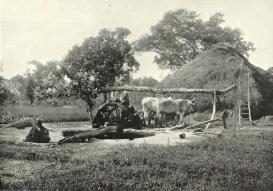In India, the Persian wheel or saqiya was probably imported around the thirteenth or fourteenth century in the wake of the Turkish conquests of northern India. It had wide-ranging consequences for agricultural productivity, especially in the Indus basin region. The Persian wheel had the shape of a wooden “machine” based on pin-drum gearing and could be worked by dint of oxen. Between the sixteenth and nineteenth century, it represented the peasant’s main device of water-lifting in the Indus and trans-Jamuna regions. In northwestern India too, inanimate sources of energy were being exploited, as the existence of water wheels (apart from sugar mills and windmills) in Mughal and post-Mughal Gujarat suggest.
During the research fellowship at the Max Planck Institute for the History of Science, I would like to revisit the Persian wheel and explore a) the role it played in stimulating increased productivity in agriculture; b) the spin-off effects the saqiya had on other aspects of techno-scientific development, most notably military technology, and c) the reasons why in some significant respect India’s trajectory looked different from that of Western Europe as far as the development of mechanical engineering is concerned and whether this was related to specificities in the usage of water-lifting devices. For these purposes, I intend to examine three major sources: 1) Written Persian documents pertaining to the Mughal period; 2) Miniature paintings drawn between the fifteenth and eighteenth centuries; and 3) European accounts produced between the sixteenth and nineteenth centuries.

